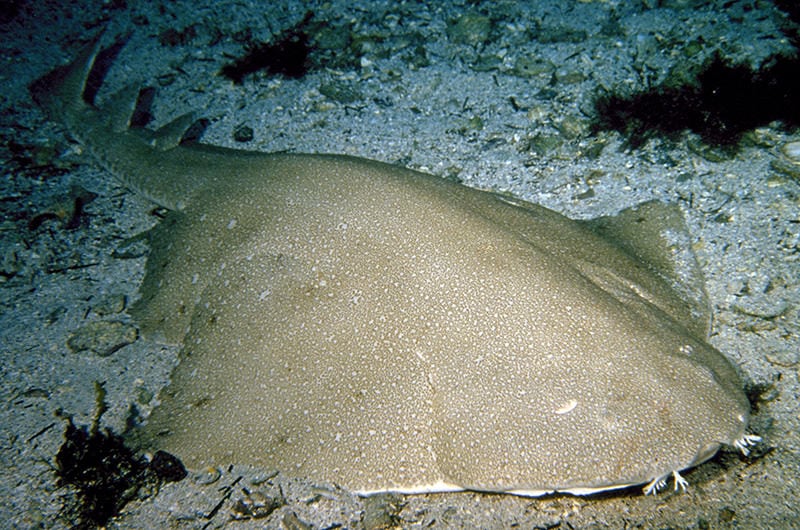Photo © Alexa Elliot
Photo © Alexa Elliot
Photo © Alexa Elliot

Typical species:
Australian angelshark
Photo © BluePlanetArchive.com
Families:
1
Genera:
1
Species:
23
Angelsharks
Like saw sharks, angel sharks are also often misidentified as rays. The most obvious difference is that angel sharks possess pectoral fins that are not attached to or connected with the head. Angel sharks also possess an enlarged caudal lower lobe but, like dogfishes, do not possess anal fins.
This order includes 18 species, most of them of smaller sizes. An exception is the japanese angel shark (Squatina japonica), that reaches 2 m.
Unique in angel sharks is that the lower lobe of the tail is longer than the upper lobe.
Angel sharks spend most of the day buried in sand. Their range is from very shallow water up to 1,300 m.

Typical species:
Japanese angelshark
Photo © BluePlanetArchive.com
Angelsharks
Angelsharks are very unique looking. Their body is very flat and bizarre-shaped. Compared to the similar looking batoids (rays) their pectoral fins are not connected to their heads. The lower lobe of the caudal fin is longer than the upper one. Angel sharks lack an anal fin. They show a wide distribution in temperate and tropical waters from close inshore to the upper continental slopes down to more than 1300 m . Except for the Japanese angelshark, Squatina japonica, which reaches 2 m, are all others of smaller size. Angel sharks have an ovoviviparous style of reproduction (aplacental viviparity). All more than 20 species belong to the same genus.